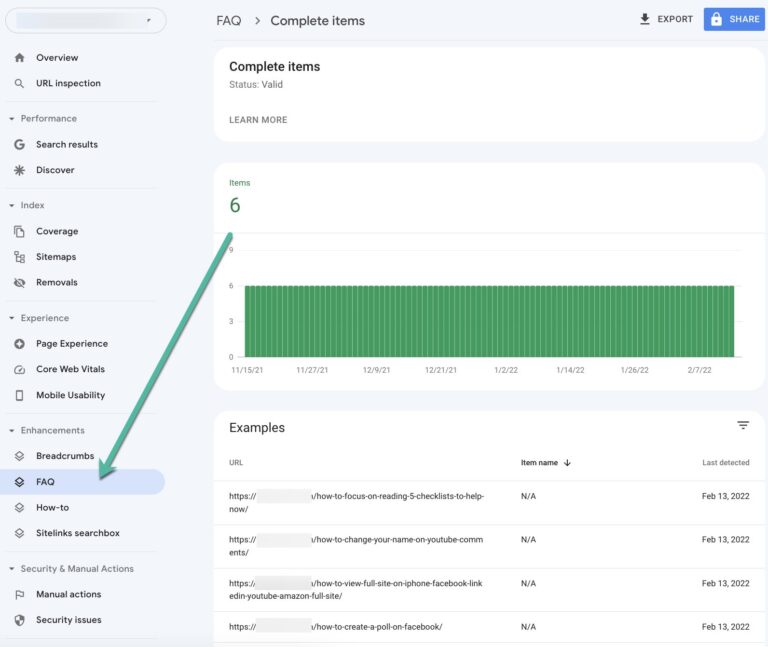The stores, opened under the brand name Ochama, introduce what JD.com has described as “an unprecedented shopping format”, which merges “online ordering and pick-up shops in which robots prepare the parcels, and home delivery service”. Not only is Ochama significant for being JD.com’s first physical store outside of Asia, it may also be the first instance of the concept of ‘New Retail’ in Europe.
New Retail is a term coined by Alibaba’s Jack Ma in 2017 to describe his vision of the future of shopping: the integration of online and offline, along with logistics and data, into a single value chain. Alibaba Group President Michael Evans said in 2019 that “Consumers don’t think about the world [as] online versus offline – neither should brands and retailers.” Alibaba’s vision for New Retail is best embodied by its Hema Xiansheng (known outside China as Freshippo) grocery stores, which blend experiential with digital, allowing consumers to browse and sample fresh produce that they can learn more about on their smartphones, with orders placed via a dedicated app.
While smart stores are being trialled by a variety of retailers and brands, what’s distinctive about New Retail isn’t really its use of technological activations like in-store smart screens or RFID readers – after all, Ochama lacks most of these. Instead, it’s the fundamental system of integrating online and offline, logistics and data, that makes it revolutionary: a focus on the customer and their experience and convenience, and a perspective that ‘online’ and ‘offline’ aren’t mutually exclusive modes of retail, but ultimately complimentary. For retailers that are struggling to reconcile their store estate with their online presence or crack omnichannel in the age of Covid-19, New Retail’s approach could be the key.
Like many other New Retail store chains in China such as Hema Xiansheng and Seven Fresh, Ochama achieves this by positioning its app at the core of the shopping experience. Ochama’s store windows prominently display QR codes that can be used to download the Ochama app on Android or iOS, and although placing an order via the desktop website is possible, the expectation is that shoppers will be using the app, which is designed to offer a quick and seamless ordering experience. The app is also required for in-store collection, as it generates the QR code that shoppers scan to pick up their order.
A marketer’s guide to China’s key social media and ecommerce trends
Alibaba is well-known as the architect of the concept of New Retail and the main driving force behind New Retail stores in China, having not only launched its own chain of New Retail stores in the form of Hema Xiansheng, but also bought a controlling stake in supermarket group Sun Art, one of China’s largest big-box and supermarket chains, and outfitting its stores with New Retail technology. However, JD.com may be aiming to steal a march on its competitor overseas, and is flexing its logistical muscles in order to do so.
How does Ochama work?
Ochama has definitely gone out of its way to make the online buying experience as inviting and seamless as possible, with a detailed category system designed to quickly direct shoppers to exactly the right section of the online store, and eye-catching featured products on the front page that advertise the retailer’s range, from fresh groceries and children’s toys to clothing and even home furnishings. (It’s less clear how some of the larger items would fit on the conveyor belt, but perhaps they have a separate pickup section). Notably, Ochama is the first omnichannel retailer in the Netherlands to offer both food and non-food items in a single app, and the retailer prominently advertises its “one stop shop” convenience, clearly hoping that it will become the go-to store for more than just food.
An introduction to China’s offline-online ‘New Retail’ revolution
On 10th January, Chinese ecommerce giant JD.com announced that it had opened two new bricks and mortar retail stores in the Netherlands: one in Leiden, and one in Rotterdam.
As mentioned earlier, the core tenet of New Retail, as envisioned by its creator, Jack Ma, is the integration of online, offline, logistics and data into a “single value chain”. When Ma first envisaged the concept in 2016 (before fully outlining it in a 2017 letter to shareholders), he reportedly stated that New Retail would make the distinction between physical and virtual commerce obsolete.
The experiential side of Ochama’s stores is less elaborate than its Chinese counterparts; Hema and Seven Fresh both offer in-store restaurants where customers can eat fresh food that is cooked on-site, while in-store technology like RFID readers and scannable QR codes tell shoppers more about the produce they are about to buy. However, this level of emphasis on interacting with fresh goods makes sense in China, where shoppers have long been accustomed to buying produce, meat and seafood from wet markets that allow them to sample and get up close to the food they are buying; in other parts of the world, this is not such an expected part of the shopping experience.
All purchases at Ochama are made online, whether through the website or through the app. This is where the merging of online and offline comes in: although Ochama has physical stores, they operate more as a combination of showroom and warehouse, with robots picking and preparing orders that are subsequently delivered to the customer on a conveyor belt when they arrive to collect it, or packed for home delivery. The shop floor also features carefully-crafted displays of Ochama’s range of products that are designed to inspire customers when they come in-store to collect their items.

How Ochama embodies the concept of New Retail
It’s possible that Ochama will later enhance its store experience with more digital touchpoints or experiential elements, but as it stands, the retailer still has all the key components of a New Retail shopping experience. So, why is it significant that JD.com is introducing New Retail to Europe?
JD.com foreshadowed the ramping-up of its international expansion in May 2021, following an IPO of its logistics unit on the Hong Kong stock exchange. JD.com founder Richard Liu reportedly wrote in an internal letter that JD.com was “very confident to bring our successful experience in logistic, supply chain and technology to the world.” Four months later, JD.ID opened its first overseas “e-space store” in West Java province, Indonesia. In signature New Retail fashion, the store allows customers to place orders online and collect them in-store, while also offering a number of experiential sections such as a gaming area and a smart home area. The JD.ID E-Space Store is in fact JD.com’s second smart store venture in Indonesia, following on from the launch of an AI-powered unmanned store in Jakarta in 2018.
JD.com has an equivalent chain of stores known as Seven Fresh (formerly styled as 7Fresh), and it uses the term “boundaryless retail” rather than New Retail to describe the concept; however, New Retail is the term best-known worldwide. JD.com has not referenced New Retail or boundaryless retail in conjunction with Ochama, but anyone familiar with the concept will quickly spot the similarities.
The Netherlands is noteworthy for its high level of urbanisation (the second-highest in Europe, according to World Bank data, after Belgium), which makes it a good location to test a new store concept. It’s worth noting, however, that the Netherlands lags behind in terms of mobile commerce adoption according to a 2021 Global E-commerce Trends Report from J.P.Morgan, which may make an app-driven shopping experience a tougher sell. The report notes that Amazon, which launched in the Netherlands in March 2020, has faced stiff competition from established domestic players; nevertheless, it calls the Netherlands a “strong online shopping arena with plenty of potential to introduce greater e-commerce innovation”.

Speaking to CNBC in November 2021, JD.com’s newly-appointed Chief Executive of retail, Xin Lijun, said that the company was carrying out “further strategic analysis in Vietnam and Europe” as potential locations to expand to. He stated that the company’s logistics arm had been leading the group’s international expansion efforts, noting that, “What we provide is integrated and closed-loop services. This is what enables us to perform generally well in overseas markets.” A report by Pan Daily noted that JD.com has made arrangements in 50 bonded or overseas warehouses globally, while its international logistics cover more than 100 countries and regions.
Here’s how JD.com’s new Ochama stores embody the core traits of New Retail, and why I think it is noteworthy that JD.com is opening them in Europe.
The significance of JD.com’s New Retail foray into Europe
With consumers across the world more comfortable than ever with buying online, and also embracing technologically-enabled store concepts like Scan & Go or ‘Just Walk Out’ in a way that they hadn’t prior to the pandemic, this could be the ideal moment for JD.com to introduce New Retail more widely.
Ochama’s name combines the words “omnichannel” and “amazing”, with “omnichannel” representing its fusion of online and offline, and “amazing” purportedly referring to its high-quality selection of products. In a promotional video created by JD.com, Ochama COO Mark den Butter emphasises the retailer’s ability to offer the best of both worlds, saying, “ochama is where online ease and offline service and commitment meet.”
To shop at Ochama, consumers must first sign up to become a member, which is currently free for the first year on a promotional basis, but will later cost 10€ per year. Upon signing up, members need to volunteer their mobile number, email address, and postal address. Ochama touts a number of benefits associated with membership, including free collection, free returns, and 10% of the value of each shop awarded to your account as credit.
[embedded content]
While it’s less clear currently how the “offline service and commitment” half of Ochama’s offering is delivered, as the customer experience seems fairly low-touch (the order collection is self-serve, which doesn’t provide many opportunities for interaction with store staff), the in-store showroom does offer something that purely online retail cannot: an opportunity to browse, examine and interact with products up close before buying them. This experiential element turns Ochama’s stores into something more than an elaborate means of collecting an online order; it is also a key component of New Retail, and the way that New Retail fuses the advantages of both online and offline shopping.
If Ochama can win over Dutch consumers (whom it is currently wooing with a membership fee waiver and reduced product pricing), it will gain valuable data from the venture that could fuel a potential expansion into other European countries. Forbes notes that Belgium, Luxembourg, Denmark and Sweden, as other highly urbanised countries, could be strong contenders; however, JD.com has yet to confirm any further European expansion, no doubt waiting to see how its Netherlands launch plays out.
As previously mentioned, there is typically an experiential component that makes the store a core part of the New Retail proposition, even if all orders are placed on app or website. In Ochama’s case, shoppers can browse and interact with the product displays in-store, gaining a sense of the retailer’s product range (and quality), and hopefully becoming inspired to make future shopping trips.
All of this sets JD.com up nicely to introduce New Retail concept stores, in which integrated logistics are a central part of the proposition, to countries beyond China. It stands to reason that Indonesia, where JD.com has an established ecommerce presence in the form of JD.ID as well as an existing smart store, would have been first; now, its Ochama stores in the Netherlands are being viewed as a “test bed” for an omnichannel foray into Europe.
Historically, JD.com has lagged behind Alibaba in the race to expand overseas. Both have a number of overseas ventures: Alibaba owns a controlling stake in major Southeast Asian ecommerce company Lazada, has an expanding footprint in Latin America, and is courting small businesses in the United States, making wholesale goods available to non-Chinese companies through its Alibaba.com platform. JD.com has a number of investments of its own in Southeast Asia, including JD.ID, an ecommerce venture created in partnership with local government and merchants in Indonesia; JD Central, established in partnership with Thai conglomerate Central Group; and a majority stake in Vietnamese ecommerce platform Tiki. However, its moves to expand its global presence have been less aggressive than Alibaba’s – until now.
Ochama has integrated logistics into the retail experience with its store-picking robots and conveyor belts that deliver customers their orders, which are reminiscent of the aerial conveyor belts that adorn the ceilings of Hema and Seven Fresh, merging the fulfilment ‘back end’ with the retail ‘front end’ and giving shoppers an insight into where their orders are coming from. Ochama’s membership scheme and its online-oriented shopping model will also provide the retailer with a wealth of data on buying habits and preferences that can feed into future decisions about product ranges and the customer experience.






